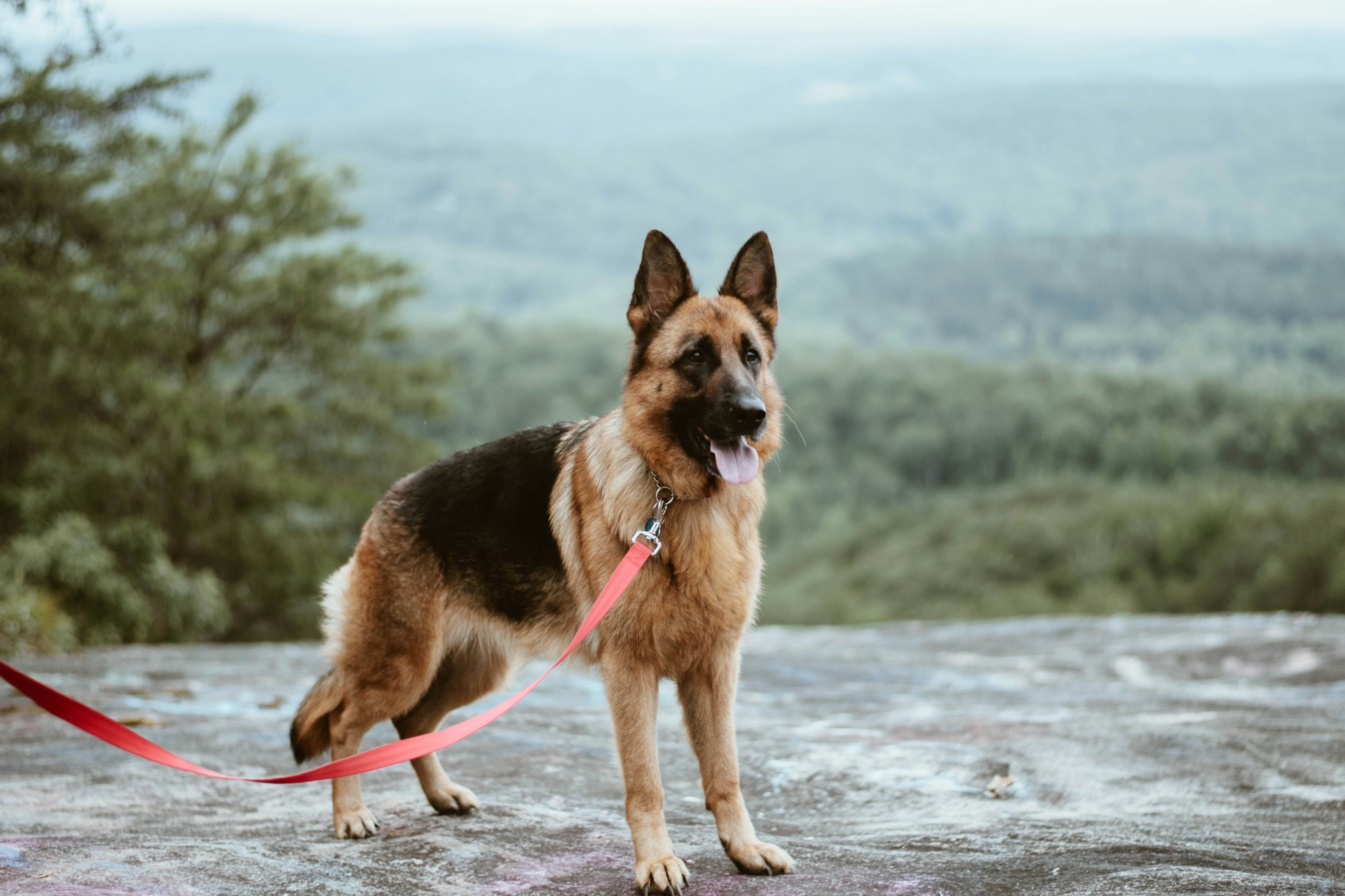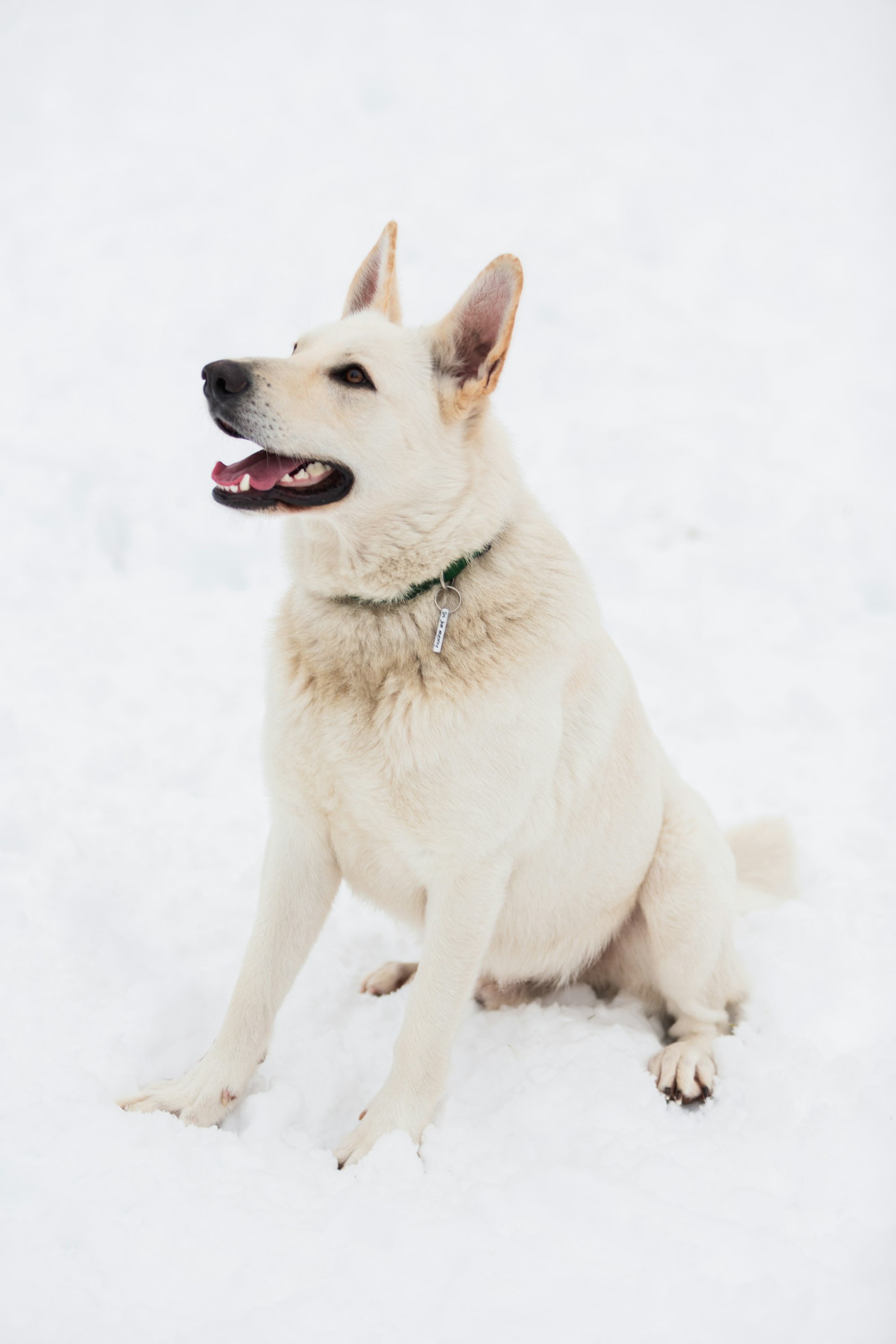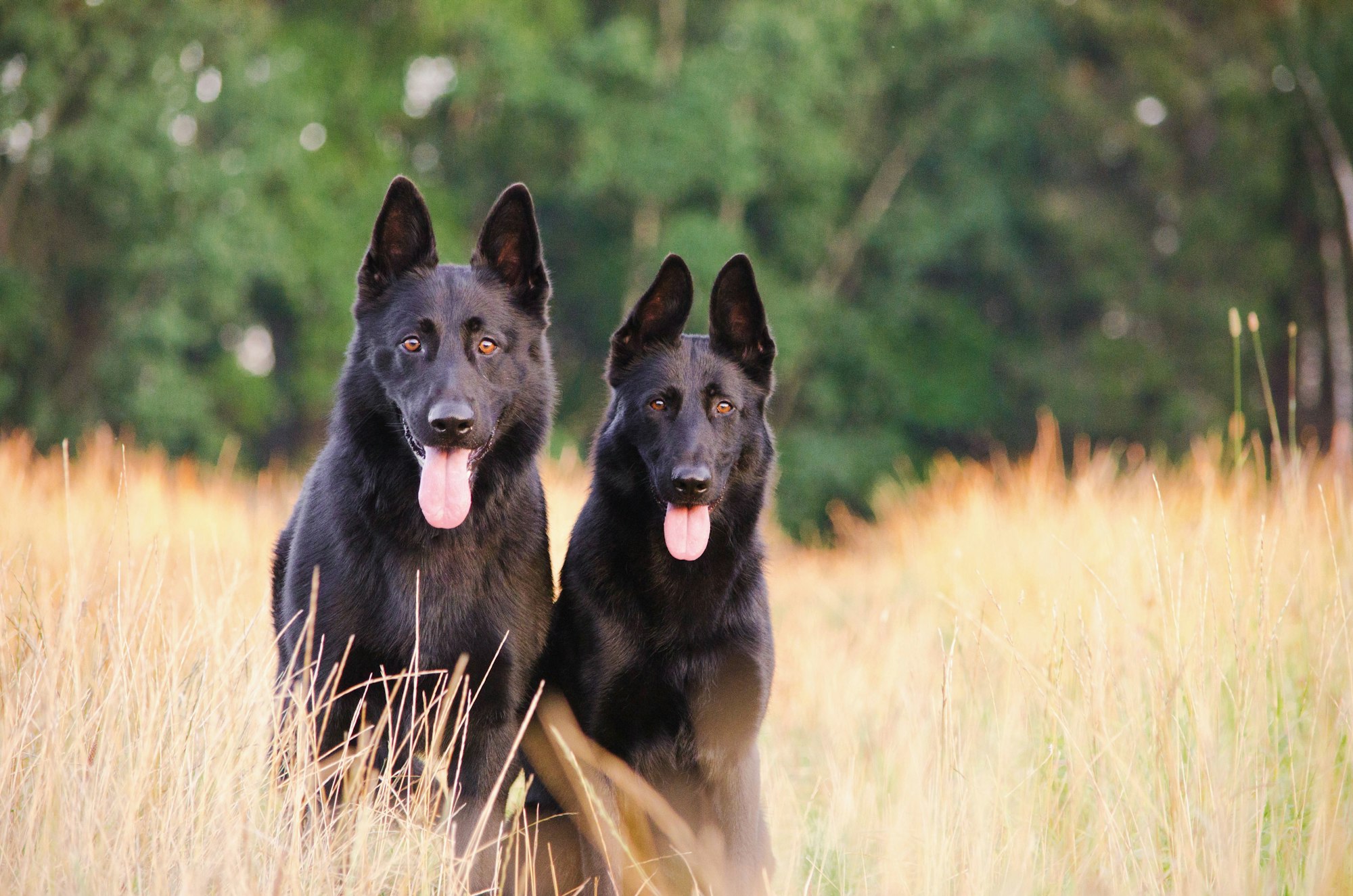For most of us, a black and tan dog or black and brown dog comes to mind when we think of a German Shepherd. But did you know there are actually 11 standard colors recognized by the American Kennel Club?
On top of that, there are several more unrecognized colors that these dogs can sometimes be.

Curious? Let’s dive in and learn about the surprising color variations of the classic German Shepherd!
What Determines a German Shepherd's Color?
A German Shepherd's unique coat color is largely determined by genetics. Each dog carries two sets of genes that influence their coats.
The first set is the base or primary color gene, which determines the basic hue and pattern of the coat. For example, a black and tan German Shepherd will have a black base color gene while a sable one would have a brown base color gene.
The second set of genes are modifiers, which can lighten or darken certain areas of the coat for more variation in shades and patterns. These modifiers can also produce rarer colors like white and blue German Shepherds!
While some owners may be lucky enough to get an eye-catching pup from just these two sets of genes, others may need to look into breeding specific lines in order to achieve their desired look. In any case, it's always fascinating how much variety there is among this amazing breed!
Let’s take a look at some of the colors this beautiful dog can come in!

1. Black and Tan German Shepherds
Black and tan is typically the color that comes to mind when people think of German Shepherds. These are classically handsome dogs with a saddle-like pattern of black running across their back and a black face.
Under that, they will be some kind of tan color, though the exact shade can vary from a deep brown to a lighter color that is almost silver. German Shepherds also tend to lighten as they age so your German Shepherd pup may look slightly different throughout his life.

2. Sable German Shepherds
Surprisingly, though black and tan is more stereotypical, Sable is the most common color thanks to its dominant genes. This German Shepherd has a more homogeneous coat, meaning they tend to be one color rather than having distinctive black highlights.
The base color can be black, tan, red, silver, or gray and all hairs will have black tips. Note that a sable puppy will change color as he ages. Some GSDs do not stop changing color until they are nearly three years old!
3. White German Shepherds
White GSDs are considered undesirable by the AKC and are not allowed as show dogs. However, they can be registered and they are sought-after by some for their unique and beautiful coloring.
These stunning pooches have coats made of pure snow-white fur –- creating an absolutely breathtaking look that everyone will be sure to notice. They are sometimes confused with white Huskies, but will never have blue eyes like a Husky can.
The AKC and other dog organizations look down their noses at the white GSD. But others appreciate the regal, wolf-life majesty of these beautiful creatures.

4. Solid Black German Shepherds
On the other end of the color spectrum, GSDs come in solid black as well. These dogs have stunning coats made of pure black fur – creating an eye-catching yet subtle look.
Plus, their dark coloration helps them blend into their surroundings better than other breeds. This helps promote their prowess as excellent guard dogs or hunters.

Black genes are recessive, so pure black German Shepherds tend to be harder to find. Some can have a little bit of brown on their toes or even white markings on their chest and are still considered a black German Shepherd.

5. Liver German Shepherds
Are you looking for a pup that’s sure to make all your friends jealous? Then why not go for a Liver German Shepherd?
These gorgeous pooches have coats made of stunning liver (brown) colored fur. They can be solid colored or have tan or white markings. Liver, liver and tan, and liver and white are all recognized by the AKC.
The liver color itself can range from a lighter brown to a darker brown, almost red color. On top of that, liver GSDs come with gorgeous amber eyes that shine with the breed’s intelligence.
6. Black and Red German Shepherds
Black and red GSDs enjoy a lovely red base coat with patches of black. The red color can range from a lighter strawberry tone to a deep, rich mahogany color. They will almost always have a black muzzle or face and patches will appear along the pup’s back, rear end, and tail.
Black and red genes are dominant, so this type of GSD is quite easy to breed for and somewhat common. Yet these beautiful dogs are always in demand. A freshly brushed black and red GSD positively gleams in the sunshine!
7. Bicolor German Shepherds
The bicolor is similar to the black and tan version and some people debate that it should be a variation rather than its own color. But, for now, it is categorized separately.
Bicolor GSDs are mostly black but have tan or brown fur on their legs, chest, and under their tail. Baby bicolor GSDs are often born mostly black and can be hard to distinguish from black GSDs. However, they will usually have some brown under the tail which indicates how their color will change as they mature.
8. Blue German Shepherds
The sight of a blue GSD is an amazing thing to see. These dogs have a smoky gray coat that leans toward a lovely shade of blue.
The blue gene is quite recessive and breeders have to work carefully to achieve the right mix. The color is desirable, though, so they are not necessarily rare. However, they may cost a pretty penny, depending on who you buy one from.
It’s also important to note that the blue GSD is not at any higher risk of health problems than other types of GSDs. Though some blue dogs (like blue French Bulldogs) are prone to poor health, that’s not an issue amongst blue GSDs.
9. Gray
Gray GSDs are one of the 6 solid colors for GSDs recognized by the AKC. However, some people will say that they are really just a type of sable. But contradicting this is that many gray GSDs have no black hair and remember that the sable color typically has black tips.
Regardless, the light or dark gray color of their fur makes this GSD appear more like a wolf, which some people really love.
This color is produced by a dominant gene, so while gray GSDs aren’t rare, they aren’t necessarily common either. You may have to do a bit of research to find one.
10. Black and Silver
The black and silver GSD looks a bit more exotic than the black and tan but follows a similar color pattern.
The bottom of the dog’s body is a silver or gray color and they will have black on their face and running along their back. The actual color distribution can vary considerably from individual to individual.
The color itself can vary as well. The black part can actually range from dark gray to an inky black and some individuals have various shades of black in the same coat.
A Rainbow of German Shepherd Colors
There you have it! And this is only scratching the surface of all the colors a GSD can be.
One thing’s for certain, whatever color it is, the German Shepherd is a beautiful, loyal, and energetic companion who will bring you many years of love.
For more helpful articles about pet-parenting tips, check out the Off Leash blog at TryFi.com.
Want to know more about TryFi.com? The Fi Dog Collar is a GPS tracking collar that not only keeps track of your dog’s location, activity levels, and sleep patterns, but it also alerts you if your dog escapes your backyard. This is the fastest way to find your dog after an escape. Try the Fi Dog Collar today!






